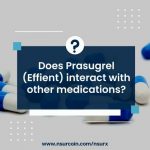
Contents
- 1 Ventricular Septal Defect (VSD)
- 1.0.1 How common is a ventricular septal defect?
- 1.0.2 What is the normal design of the heart?
- 1.0.3 How do ventricular septal defects cause problems?
- 1.0.4 What are the signs and symptoms of a ventricular septal defect?
- 1.0.5 How do doctors diagnose a ventricular septal defect?
- 1.0.6 What if the ventricular septal defect is small?
- 1.0.7 What if the ventricular septal defect is large?
- 1.0.8 What types of surgery are available for a ventricular septal defect?
- 1.0.9 What is the prognosis after a ventricular septal defect is repaired?
- 1.0.10 What are complications of ventricular septal defect surgery?
- 1.0.11 What about unusual cases of ventricular septal defect?
- 1.0.12 What are long-term precautions with ventricular septal defects?
Ventricular Septal Defect (VSD)
A ventricular septal defect (VSD) is a heart malformation present at birth. A VSD is a type of congenital heart disease (CHD) characterized by a hole in the septum, the wall between the heart’s lower chambers (ventricles).
How common is a ventricular septal defect?
Approximately eight in 1,000 newborns have CHD, and a VSD is the most frequent type of CHD, accounting for 25%-30%. It is estimated that one infant in 500 is born with a VSD.
What is the normal design of the heart?
The heart consists of four separate chambers. The upper right chamber (atrium) receives deoxygenated blood from the body, which is then pumped into the lower right chamber (ventricle) before being sent to the lungs for oxygenation. Oxygenated blood returns to the heart and passes to the lower left chamber (ventricle), which pumps it out to the body through the aorta.
The two upper chambers (atria) and the two lower chambers (ventricles) are separated by muscular septa to prevent mixing of oxygenated and deoxygenated blood.
A VSD is a hole in the ventricular septum.
How do ventricular septal defects cause problems?
In the presence of a VSD, blood is shunted from the left ventricle to the right ventricle, causing extra work for the right ventricle and increased pressure in the lungs. The excess pressure can damage the lungs if it persists.
The size of the VSD determines the amount of shunting and mixing of oxygenated and deoxygenated blood. A larger VSD allows more blood to be shunted, increasing the risk of RV enlargement and circulation of deoxygenated blood throughout the body.
What are the signs and symptoms of a ventricular septal defect?
Infants with a VSD may exhibit poor feeding, rapid heart and respiratory rate, fussiness, pallor, and cyanosis. If left undetected, symptoms may progress to poor weight gain, enlarged liver, shock, and possibly death.
How do doctors diagnose a ventricular septal defect?
A VSD is usually diagnosed by hearing a characteristic heart murmur. Testing such as an electrocardiogram (EKG), chest X-ray, and echocardiogram may be used to confirm the diagnosis and assess the size of the shunt.
Pulse oximetry is performed to measure blood oxygen levels, and a consultation with a pediatric cardiologist is recommended.
IMAGES
What if the ventricular septal defect is small?
Small defects usually resolve spontaneously, as the heart grows and encroaches upon the opening in the septum. Surgery is typically unnecessary for small VSDs.
What if the ventricular septal defect is large?
In the case of a large VSD, surgery is necessary to patch the hole and normalize blood circulation. The timing of the surgery depends on various factors, including the extent and duration of increased pulmonary artery pressure.
What types of surgery are available for a ventricular septal defect?
The intra-cardiac technique and the trans-catheter technique are the two surgical options. The choice of technique depends on the specific characteristics of the VSD and the patient’s condition.
What is the prognosis after a ventricular septal defect is repaired?
After successful surgical repair, the ventricles operate independently, and blood circulation returns to normal. The right ventricle can return to its normal size, and pulmonary artery pressure decreases. Long-term prognosis is usually excellent.
What are complications of ventricular septal defect surgery?
Complications are rare, with a low mortality rate and a small chance of heart rhythm problems or incomplete closure of the VSD. Additional procedures may be required in some cases.
What about unusual cases of ventricular septal defect?
Rare cases of VSD associated with other cardiac defects or multiple VSDs may be more difficult to treat.
What are long-term precautions with ventricular septal defects?
Patients with VSDs, whether repaired or not, have an increased risk of endocarditis. To prevent infection, antibiotics may be necessary before dental or surgical procedures. Long-term precautions should be discussed with healthcare providers.
By clicking "Submit," I agree to the MedicineNet Terms and Conditions and Privacy Policy. I also agree to receive emails from MedicineNet and understand that I may opt out of MedicineNet subscriptions at any time.
"Ventricular Septal Defect (VSD)." Adult Congenital Heart Association.
"What Are Congenital Heart Defects?" National Heart, Lung, and Blood Institute.


